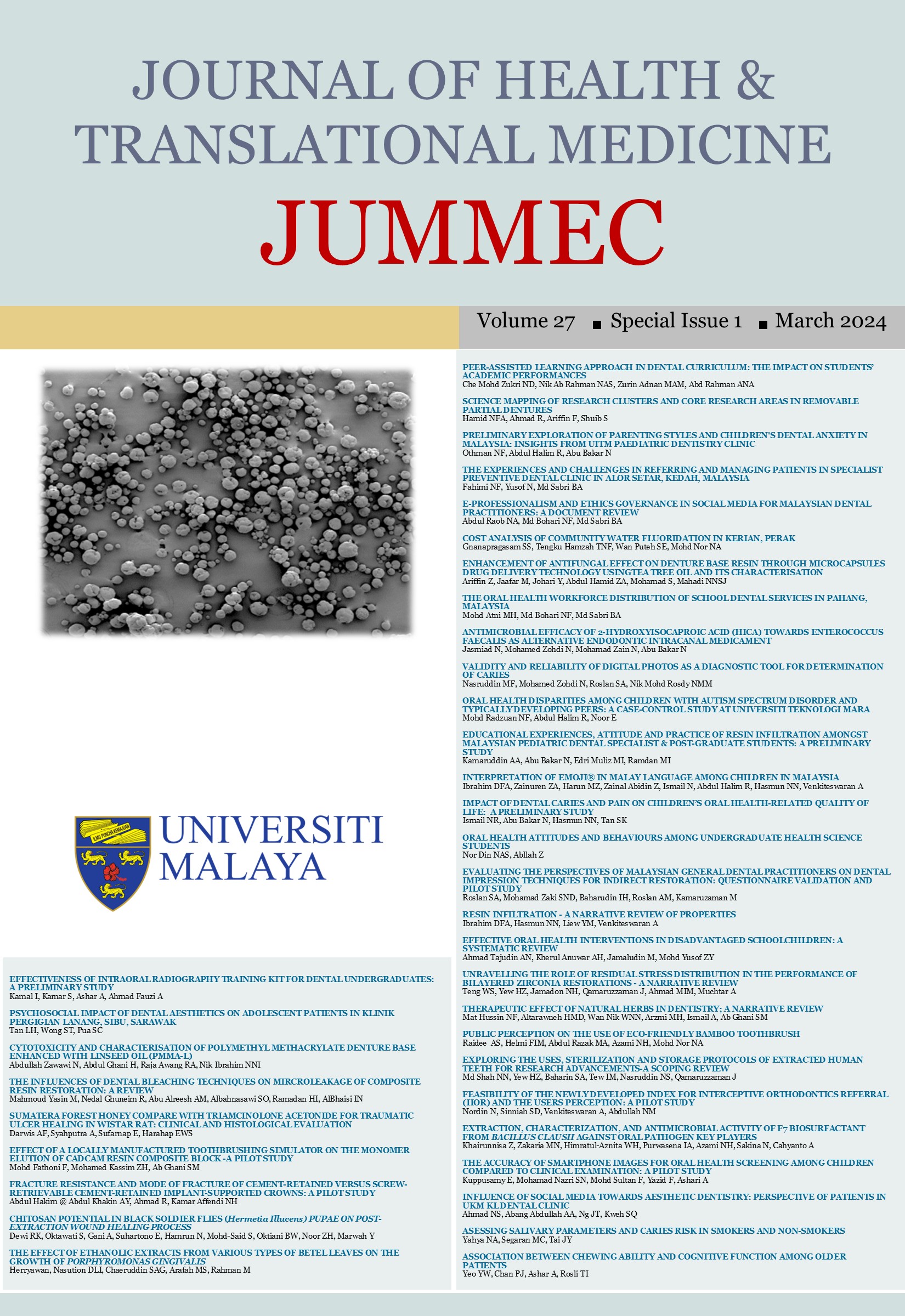PRELIMINARY EXPLORATION OF PARENTING STYLES AND CHILDREN'S DENTAL ANXIETY IN MALAYSIA: INSIGHTS FROM UITM PAEDIATRIC DENTISTRY CLINIC
Received 2024-02-19; Accepted 2024-03-26; Published 2024-03-27
DOI:
https://doi.org/10.22452/jummec.sp2024no1.3Abstract
Parenting styles play a crucial role in shaping children's behaviour and anxiety levels, but there is limited information on this aspect in Asian countries, particularly Malaysia. This pilot study aims to examine parenting styles among Malaysian parents and their potential correlation with children's dental anxiety. A pilot study was conducted involving 30 parent-child pairs attending the UiTM Paediatric Dentistry Clinic. Participants aged 5 to 12 years completed the Parenting Styles and Dimensions Questionnaire (PSDQ) and the Malay Modified Child Dental Anxiety Scale (MCDASf). Parenting styles were classified based on PSDQ scores, and dental anxiety levels were assessed using MCDASf. Parents exhibited a predominant authoritative parenting style. Pearson’s correlation revealed a positive association between MCDASf and parenting styles in two items. However, linear regression analysis demonstrated no substantial correlation between PSDQ domains and children's total anxiety scores (R2 = 14.1%). This suggests that, in this preliminary study, parenting styles did not significantly impact children's dental anxiety. The pilot study did not find a direct association between parenting styles and dental anxiety in children. The limited sample size may have affected the ability to detect subtle associations. Further investigation, possibly through qualitative research or more detailed surveys, is recommended to explore additional factors contributing to dental anxiety in children.
Downloads
Downloads
Published
Issue
Section
License
All authors agree that the article, if editorially accepted for publication, shall be licensed under the Creative Commons Attribution License 4.0 to allow others to freely access, copy and use research provided the author is correctly attributed, unless otherwise stated. All articles are available online without charge or other barriers to access. However, anyone wishing to reproduce large quantities of an article (250+) should inform the publisher. Any opinion expressed in the articles are those of the authors and do not reflect that of the University of Malaya, 50603 Kuala Lumpur, Malaysia.


